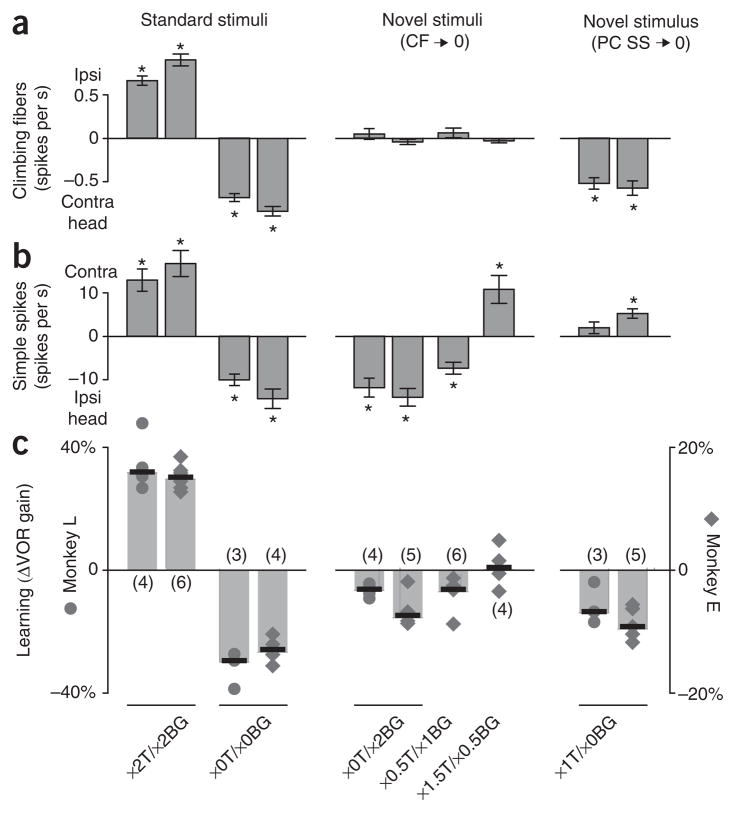Figure 4.
In the absence of instructive signals in the climbing fibers, learning was correlated with simple spike responses during training. (a) Climbing fiber responses. Bars represent the component of the climbing fiber response aligned with peak head velocity during standard training stimuli (×2T/×2BG, ×0T/×0BG), novel training stimuli that elicited no significant climbing fiber response (×0T/×2BG, ×0.5T/×1BG, ×1.5T/×0.5BG) and a novel training stimulus that elicited no significant Purkinje cell response (×1T/×0BG). * P < 0.05, one sample t test. (See Supplementary Fig. 7 for the responses of individual neurons to the ×0.5T/×1BG, ×1.5T/×0.5BG and ×1T/×0BG training stimuli.) Positive and negative values correspond to increased activity during ipsiversive and contraversive head movement, respectively. Error bars signify s.e.m. See Online Methods for detailed description of stimuli. (b) Purkinje cell simple spikes. Positive and negative values correspond to increased activity during contraversive and ipsiversive head movement, respectively (the axis is flipped relative to a, so that responses typically associated with gain increases are positive). (c) Learning. Each point represents the percent change in VOR gain in a single replication of a behavioral training session in one monkey, with a black bar representing the median. VOR learning was measured after 1 h (monkey E) or 2 h (monkey L) of training. The number of replications is listed in parentheses. Note the different scales for the two monkeys.

